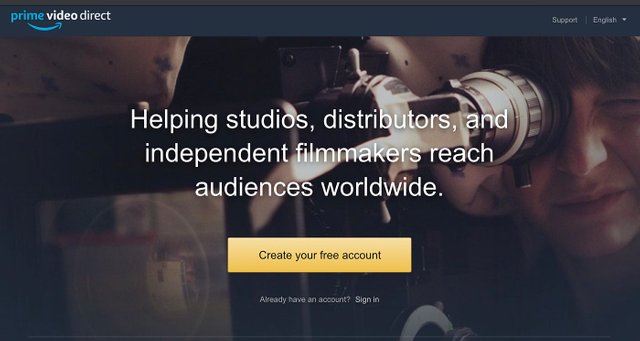How Amazon Prime Changed and How That Effects Independent Filmmakers

Back in 2018, I released my indie Western BLOOD COUNTRY on Amazon Prime Video and within a few pay cycles it earned enough revenue to pay back all investors on the film. At the time, Amazon was gold for indie filmmakers like myself. When I say “indie”, I don’t mean the kind of independent films that go to Sundance, the kind that get nominated for Indie Spirit Awards, the kind with distribution deals. I’m talking about true indies: movies made for under 200k, cobbled together with a group of equity investors, made by a handful of people, and self-distributed. For those films and filmmakers, Amazon was a godsend for a couple years.
Through their service Amazon Video Direct, the company allowed producers to submit their own work for streaming on Prime. The approval process wasn’t difficult. As long as you followed the right guidelines for video files, key art, and ordered closed captions, your movie was live on the site for millions of users to stream within two to three weeks. Then the real work (or luck) began. In a vast ocean of titles, how could a little movie with no stars stand out? It happened now and then based on title, poster, genre, and chance. It happened with BLOOD COUNTRY as I mentioned. It also did with PORCHES AND PRIVATE EYES. Both movies were “in the black” and continued to earn significant net profit for months.
Now, keep in mind the way movies were paid revenue by Amazon. When I started releasing titles on the platform, you could make up to 15 cents per hour streamed. You’d make a dime or less per hour if your title wasn’t streamed as often. If you made it to that 15 cent tier, you had a chance at profit. But do the math. For a movie like BLOOD COUNTRY to make a profit, it had to be streamed over 300,000 hours. That requires thousands of strangers finding the movie and taking the time to watch it! But it happened, not always but sometimes, and the possibility of it happening was enough to provide independent filmmakers with a path to profit.
And then it all changed. Amazon changed their payment structure, making the max 10 cents and the minimum as low as a penny per hour streamed (it had been a min. of 6 cents). Revenue dropped dramatically. It seemed harder than before to reach the maximum payout. Soon, titles that were making hundreds of dollars every month were making less than ten bucks. The gold mine of indie film self-distribution dried up. By the time I released BASTARD’S CROSSING on the service in 2021, the film was streamed 100,000 hours in one month (not bad for a movie with zero advertising budget) and made only 1,000 dollars at 1 penny per hour streamed.
That’s not all that changed about Amazon Video Direct. I mentioned the timeline of two to three weeks to get a title approved and live on the site. As the years went by, that approval process continued to get longer and longer. Flash forward to this year: I submitted our docu-series THE LEGACY OF THE 12 WESTERNS in March and only this month (August) did it finally get released but with only 1 of its 4 episodes available to rent or buy. I contacted support just the other day to find out why Episode 2 went live but not any of the others? I do not expect to see a solution anytime soon and to be honest I am just about ready to throw in the towel with Amazon Video Direct for good. It is no longer worth the effort…
The good news is that other avenues for indie filmmakers arose from the ashes of Amazon. Tubi, a different kind of streaming service based on AD break earnings, has become the most lucrative release platform for the kind of movies I’ve made my whole career. Like Amazon, Tubi allowed for many of my investors to recoup during the past few years. It also gave an opportunity for certain films that never did well on Amazon to have a second life, like my Dixie Mafia 80s thriller CORNBREAD COSA NOSTRA. Fingers crossed, the Tubi train continues for a few more years. I know it won’t forever. The industry is constantly evolving and means of distribution & making a profit are always changing. I can’t tell an investor today that Tubi is the way go to because by the time we produce and release the movie (usually a year-long process) the story might have changed. Worth mentioning also is a service called FILMHUB. It allows producers to upload their own content (with some fairly strict file requirements) and it puts your title(s) out to multiple streamers including Tubi and ironically Amazon Prime. They take only 20% of your earnings for now. Yes, it will change someday.
And one last note on Amazon: for a company that makes so much cash, I believe they could have continued to afford paying filmmakers 15 cents per hour streamed and remained the go-to place for indie movies. Instead, they fumbled the ball. At least someone else picked it up.
"Wow, what a fascinating behind-the-scenes look at the world of indie filmmaking! 😮 It's mind-blowing to think that Amazon Video Direct once offered such promise for creators like you, but changes in their payment structure and approval process made it harder to succeed. 🤔 I'm glad to hear that Tubi has become a new opportunity for you and your investors, though - fingers crossed it keeps on rolling! 💪 I'd love to hear more about your experiences with Amazon Video Direct and how you've adapted to the changing landscape of indie filmmaking. Have any of your other movies found success through platforms like FILMHUB? 🤔"